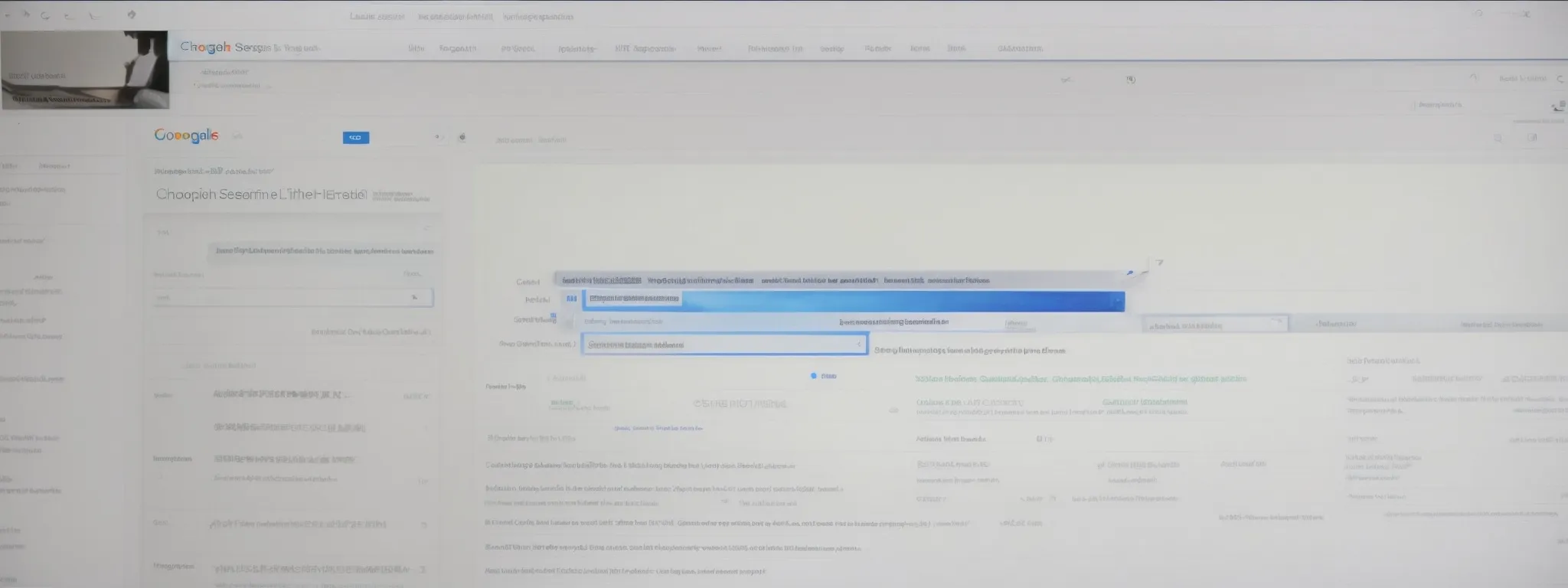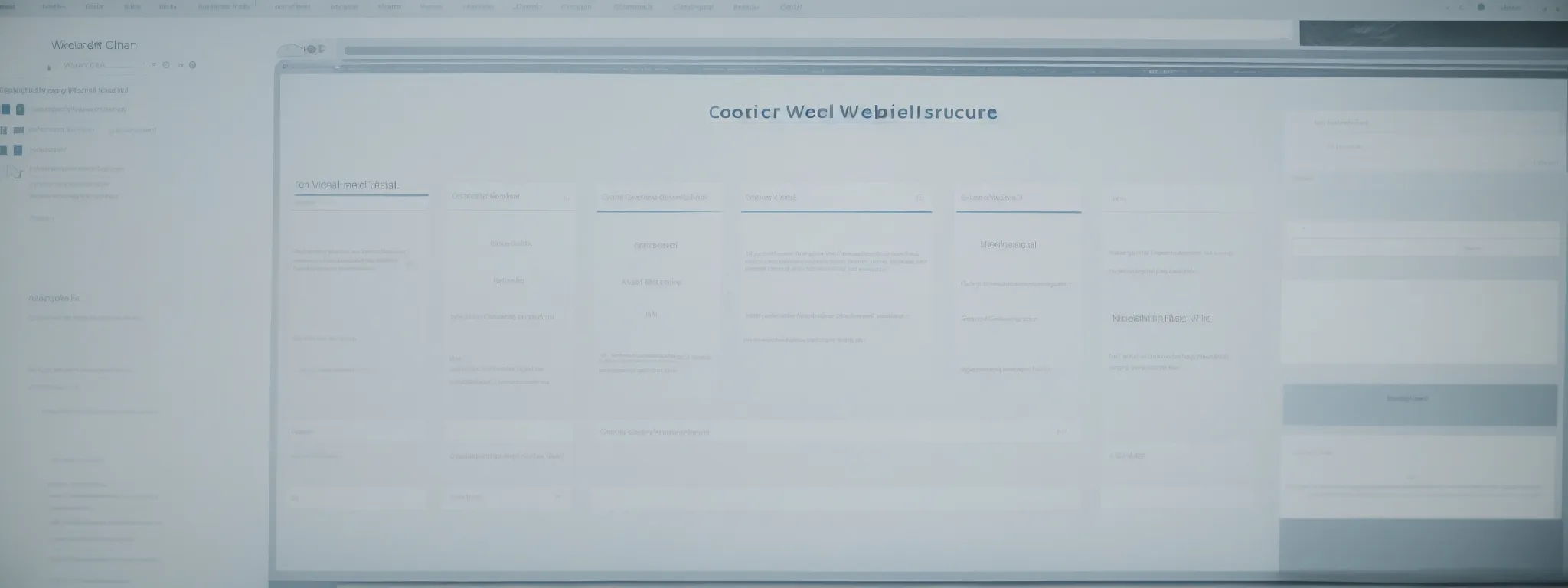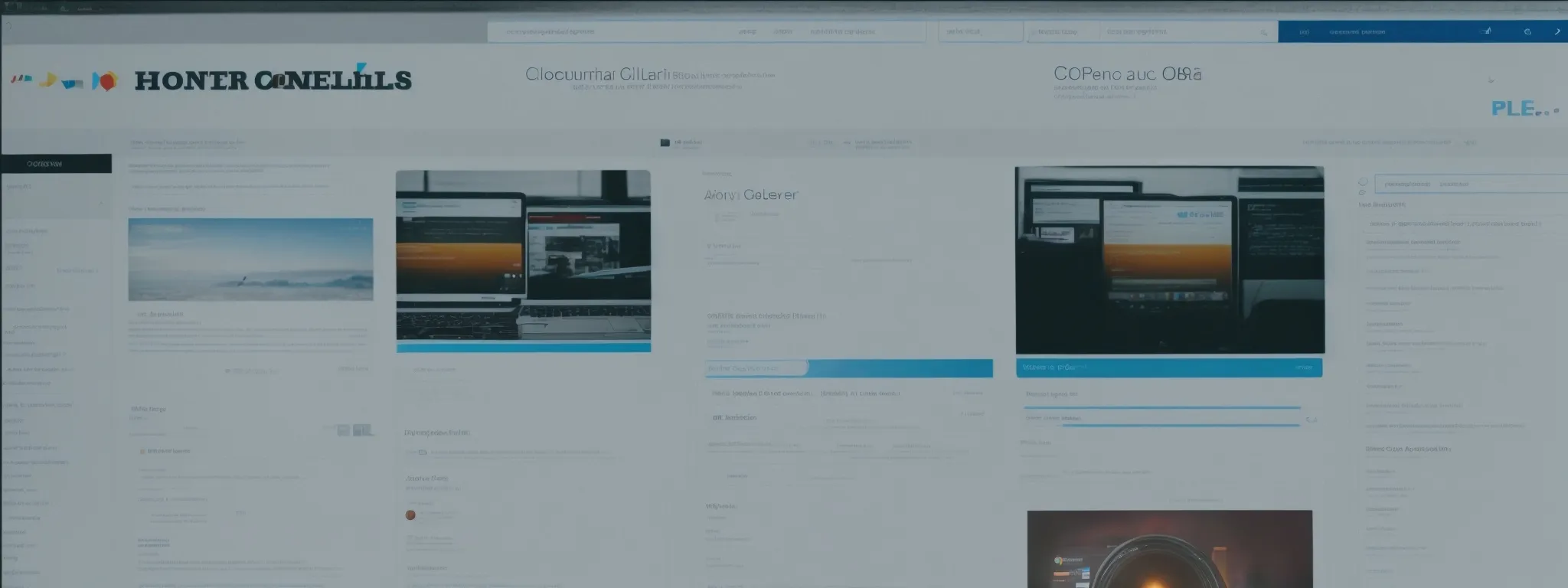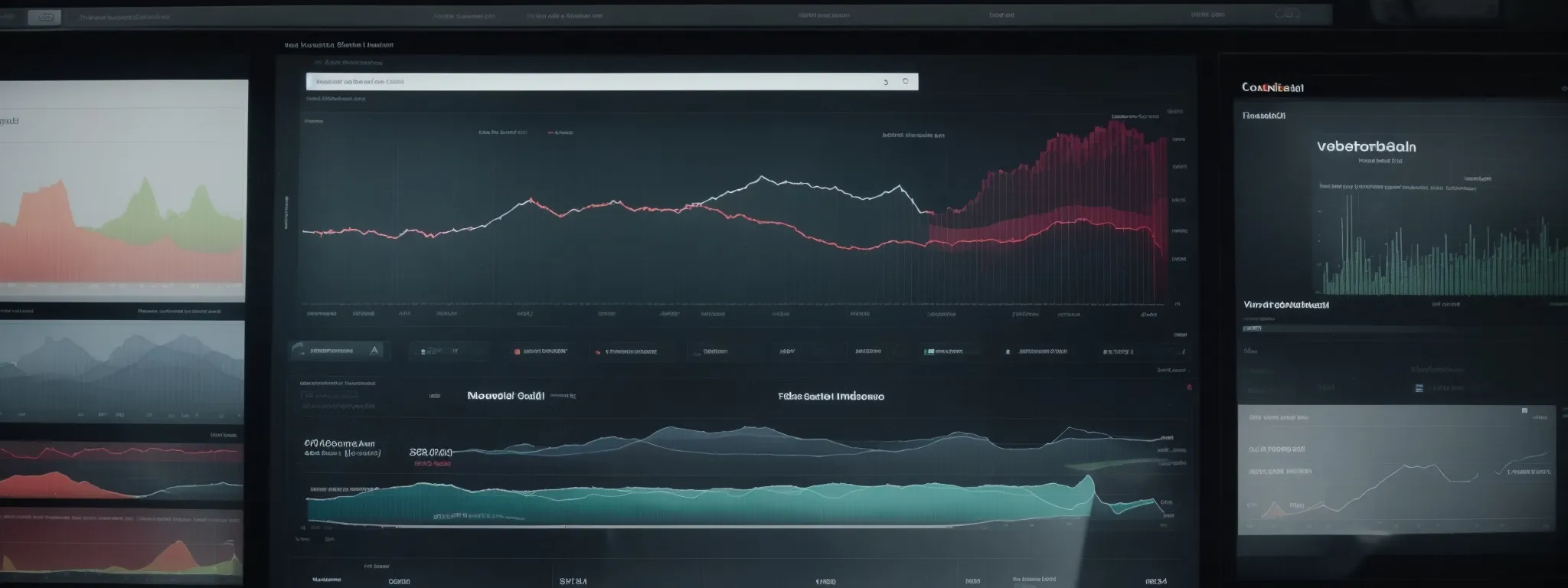Sitelinks: Your Guide to SEO Success
Sitelinks: Your Guide to SEO Success Sitelinks significantly elevate a brand’s visibility on search engine result pages, carving a direct path for searchers to delve deeper into […]
Sitelinks: Your Guide to SEO Success
Sitelinks significantly elevate a brand’s visibility on search engine result pages, carving a direct path for searchers to delve deeper into a website’s subpages.
They are not only indicators of a robust site structure recognized by Google but can also dramatically enhance user experience by simplifying navigation to crucial sections.
A company’s home page becomes a hub from which visitors can seamlessly access prime content, whether it’s a detailed service page, a vibrant shop page, or an insightful blog.
The presence of sitelinks can crucially impact click-through rates (CTRs), making understanding and implementation an essential skill for any marketeer.
Keep reading to discover how LinkGraph’s meticulous SEO services and the innovative SearchAtlas SEO tool can become your allies in harnessing the power of sitelinks to their fullest potential.
Key Takeaways
- Sitelinks Enhance Visibility and User Navigation on Search Result Pages, Improving Click-Through Rates and Brand Authority
- A Well-Structured Website With Clear Main Navigation and Clean URLs Increases the Probability of Google Awarding Sitelinks
- Regular Audits and Updates of Sitelinks Through Google Search Console Ensure They Remain Relevant and Effective
- A/B Testing and User Feedback Are Critical for Optimizing Sitelinks and Aligning Them With Searcher Intent
- Unique and Targeted Page Titles and Meta Descriptions Are Key to Differentiating Web Content and Improving Sitelink Performance
Understanding the Importance of Sitelinks for SEO

Within the intricate tapestry of search engine optimization, sitelinks emerge as pivotal elements that extend far beyond mere navigational conveniences.
These links, which often appear beneath the page title of a website within Google search results, not only bolster a site’s visibility but also underscore its authority and structure.
When searchers gaze upon a search result teeming with relevant subpages, they bear witness to the site’s depth and the ease with which they can glide through the information they seek.
The presence of sitelinks can influence click-through rates (CTR), enhance user navigation, and amplify a website’s credibility.
Unraveling the fabric of sitelinks reveals their indispensable role in a comprehensive SEO strategy and underscores why webmasters are keen to understand and leverage them effectively.
What Are Sitelinks and How Do They Affect SEO
Sitelinks are ancillary links that accompany a primary search listing, often displayed under the page title in Google search results. These supplementary links provide a direct pathway to significant subpages, enabling visitors to bypass the home page and navigate quickly to the information or product they are interested in. Recognized as a mark of distinction by Google’s algorithms, sitelinks can significantly heighten a website’s prominence and user accessibility within search results.
The strategic significance of sitelinks in SEO is linked to their impact on user experience and their contribution to a website’s click-through rate (CTR). Enhanced visibility in search engine results not only drives higher site traffic but also fosters trust among searchers. As Google’s algorithms select sitelinks based on a site’s relevance and structure, the presence of these links serves as an indicator of a meticulously crafted and user-centric site architecture, key components of an influential SEO strategy.
The Influence of Sitelinks on Search Visibility
Sitelinks play a critical role in amplifying a brand’s visibility across search result pages. By showcasing a variety of relevant subpages directly in the search results, these links enable a brand to occupy a larger digital real estate, making it more likely for users to click through to their site.
The inclusion of sitelinks in Google search results does more than enhance a brand’s online presence; it communicates a high level of domain authority to potential visitors. As these curated links lead to essential aspects of the site like the shop page or privacy policy, they pave the way for increased traffic and improved user engagement:
| Aspect of Sitelinks | Impact on Search Visibility |
|---|---|
| Larger Search Snippet Presence | Higher visibility and increased likelihood of user clicks. |
| Domain Authority Signal | Trust-building with users and reputation enhancement with search engines. |
| Direct Navigation to Site Subpages | Streamlined user experience leading to longer site engagement. |
Enhance User Navigation and Website Credibility With Sitelinks
Sitelinks serve as a conduit for enhanced user navigation, allowing a seamless transition from the Google results page to the most pertinent sections of a site. Visitors can pinpoint and access the content that matches their search intent without the detours, reflecting a sharp focus on user experience—a cornerstone in the edifice of SEO.
Moreover, a robust constellation of sitelinks under a page title in search results augments the credibility of a website, asserting its status as a well-organized and authoritative source. This perception is invaluable, as confidence in a brand often underpins the decision to engage with the site, impacting metrics from bounce rates to conversions.
Crafting a Site Structure to Boost Sitelink Chances

To navigate the complex waters of Google sitelinks, one must first anchor their efforts in a well-structured site hierarchy.
A clear and logical website architecture not only aids search engines in crawling and indexing content efficiently but also elevates the chances of sitelinks appearing under your brand name in the search results.
It entails meticulous crafting that includes a well-thought-out main navigation and a clean URL structure, essential cogs in the machine of SEO that facilitate a smooth user journey and potent indexability.
This meticulous planning not only enhances user experience but also signals webmasters’ commitment to optimal site organization, casting a favorable light on the website’s SEO prospects.
Designing a Logical Website Hierarchy
When desiring the boon of Google sitelinks, webmasters prioritize a streamlined website hierarchy, where simplicity meets efficiency. Establishing such structural clarity necessitates that they follow a discerning approach, ensuring that each subdomain and hierarchy level is crafted to serve distinct purposes, facilitating both the ease of user navigation and the precision of search engine indexing.
A user-centric website structure is not just intuitive; it carries the latent potential to become a beacon in the SERP landscape. This tangible clarity not only assists visitors in finding desired content with minimal effort but also enables search engines to discern the site’s key areas, increasing the likelihood of sitelinks being awarded to enhance the search experience.
Optimizing Your Main Navigation for Clear Paths
Adept optimization of the main navigation sets the cornerstone for achieving a site structure conducive to the accrual of sitelinks. It is incumbent upon webmasters to design main navigation menus that are intuitive and reflect the site’s key areas, allowing both users and search engines to traverse the site’s content with unerring accuracy.
Clear, descriptive labels in the navigation bar coupled with a logical arrangement of sections contribute to a frictionless pathway that aids in the discovery of a website’s main offerings. This strategic clarity is instrumental in guiding Google’s algorithms to recognize the structure of a site, thereby enhancing the prospect of sitelinks being featured in the search results.
Ensuring a Clean URL Structure for Better Indexing
Ensuring a clean URL structure is paramount for better indexing, a fundamental step in paving the way for sitelinks in search results. Each URL should act as a clear signpost, guiding search engines through the site’s content and indicating the hierarchy of information.
This cleanliness in URL management allows search engines to parse the site more effectively, favoring the selection of the most relevant subpages for sitelink display within SERP:
- Consistent, keyword-rich URLs enhance understandability for both users and search engines.
- Logical URL segmentation reflects site structure, assisting Google’s site crawlers in ascertaining page importance.
- Hyphens, rather than underscores, should be utilized to separate words, aligning with best practices recognized by search engines.
Accurate, succinct URLs contribute to the SEO machinery, not only aiding in the systematic indexation but also acting as potent leverage for heightened search visibility and user trust.
Key Tactics to Encourage Google to Display Your Sitelinks

To secure a coveted position in Google sitelinks, there exist targeted tactics that SEO professionals and website owners must deploy.
Strategic use of a sitemap greatly assists search engines in efficiently crawling a website, thus expediting the indexation process.
Refining the internal linking structure can spotlight pivotal pages and accelerate their prominence in Google’s eyes.
Additionally, on-page SEO elements require careful tuning to meet the criteria for sitelinks feature.
Together, these approaches form an integrated gear in the SEO clockwork, enhancing a site’s architecture, streamlining paths for user interaction, and priming it for recognition in the SERP landscape.
Utilize a Sitemap for Efficient Crawling
Employing a sitemap is a critical step for webmasters who strive to secure sitelinks in Google search results. A sitemap acts as a roadmap, guiding search engines accurately through the corridors of a website’s content, enhancing their ability to crawl and index pages with a higher level of precision.
By submitting a sitemap to Google via Webmaster Tools, a website owner asserts control over the indexing process, ensuring that all subpages are discoverable and eligible for consideration as potential sitelinks:
- A sitemap facilitates the discovery of new or updated content, signaling to search engines which pages to crawl.
- It prioritizes important pages, providing search algorithms with clues about the hierarchy and significance of content.
- Effectively organized sitemaps can lead to quicker and more comprehensive indexation, a fundamental precursor for sitelink display.
Improving Internal Linking to Highlight Important Pages
The architecture of internal linking is a cornerstone in illuminating the pathways to a site’s most important pages, thereby signaling their value to Google’s intricate algorithm. By strategically placing internal links that connect content within the site, webmasters can highlight pages they deem crucial, boosting the likelihood of these pages being presented as sitelinks in the SERP.
Robust internal linking not only acts as a beacon for Google crawlers but also serves the dual purpose of enhancing the user experience by offering clear, direct routes to informative content. A well-implemented internal linking strategy can significantly influence both the site’s navigability for visitors and its stature in Google’s consideration for sitelinks, directly impacting a brand’s online presence.
Fine-Tuning on-Page SEO for Sitelinks Recognition
Fine-tuning on-page SEO is an art that requires precision, with each title tag, page title, and meta description crafted to peak relevance and clarity. Mastering these elements not only entices searchers but also signals to Google the page’s importance, enhancing the likelihood of its selection for sitelinks representation.
Incorporating relevant anchor text within the content paves the way for a page’s distinction in search engine result pages, fortifying its authority on a particular subject. This judiciously crafted anchor text, when paired with the strategic deployment of keywords across a site, can significantly influence Google’s algorithms in the sitelink generation process, marking the pages as valuable navigational beacons for users.
The Role of Page Titles and Meta Descriptions

As cornerstones of on-page SEO, page titles and meta descriptions play a dynamic role in enhancing a website’s sitelink potential.
These critical elements act as the first encounter between a brand and potential visitors in the search results, offering a snapshot into the content that lies within.
Meticulously crafted titles can catapult a site’s pages into the spotlight, increasing the odds of them being featured as sitelinks, while articulate meta descriptions serve as compelling invitations that drive clicks.
Standing out in the vast sea of digital content means avoiding duplication at all costs, ensuring each page is a unique beacon to both search engines and searchers alike—a mission crucial for optimizing sitelink performance and achieving SEO triumph.
Crafting Compelling Page Titles for Sitelink Potential
Efficiently harnessing the power of page titles can notably elevate a website’s chances of featuring sitelinks in Google search results. A page title, acting as a marquee on the stage of Google’s SERP, should encapsulate the essence of the content while integrating targeted keywords to optimize search relevance and appeal.
| Sitelink Component | Characteristics for Optimization |
|---|---|
| Page Titles | Incorporate targeted keywords; Ensure clarity and relevance; Maintain uniqueness across web pages. |
| Meta Descriptions | Use persuasive language; Provide clear value proposition; Complement the page title with additional information. |
Page titles not only inform users and search engines about the content’s focus but also contribute significantly to the clickable allure of sitelinks: concise, descriptive, and compelling titles often translate into higher CTRs, paving the path for enhanced visibility and user engagement.
Writing Clear Meta Descriptions That Encourage Clicks
In an ever-competitive digital landscape, crafting meta descriptions that stir curiosity and prompt action stands as a beacon for driving traffic. These succinct summaries beneath the page title in Google search results serve not just as previews of web content, but as strategic tools to entice searchers to click through, when meticulously optimized, they operate as catalysts for increased page engagement and a refined user journey within SERP.
Professionals in the SEO sphere understand that a well-formulated meta description operates in concert with a compelling page title to bolster CTR and foster user trust. Each description should effectively distill the essence of the respective page, offering searchers a transparent and engaging glimpse into the content that awaits them, functioning as a poignant invitation into the heart of the website’s offerings.
Avoid Duplication to Make Each Page Stand Out
In the pursuit of SEO excellence, differentiating each web page with distinct page titles and meta descriptions is imperative for standing out in a sea of Google search results. Unique page identifiers prevent content cannibalization, where pages compete against each other, sabotaging the site’s overall SEO performance and diluting the impact of sitelinks.
Professionals anchor their SEO tactics in crafting diverse and specific page titles and meta descriptions to enhance the unique character of each page, thus promoting a stronger sitelink profile. This approach ensures that Google algorithms recognize each page’s unique contribution to a searcher’s query, bolstering the site’s authority and relevance in the digital arena.
Maintaining Your Sitelinks: A Checklist for Regular Updates

For the savvy marketeer or webmaster, understanding that the landscape of Google search results is not static is key to maintaining prominence in the digital realm.
Regular oversight and refinement of sitelinks are imperative for sustaining SEO success.
To ensure that their sitelinks continue to afford visitors swift access to their site’s most significant subpages, it is vital for website owners and SEO strategists to engage in routine audits, update content, and scrutinize the data provided in the Google Search Console.
These practices are essential to preserve the relevance and efficacy of sitelinks as valuable passage points that fortify the brand’s position in search engine result pages.
Regular Audits to Check Sitelink Performance
Regular audits of sitelink performance stand as a critical measure for ensuring that a brand’s search result pages reflect the most accurate and beneficial navigation options for users. Such audits enable webmasters to assess the relevance and effectiveness of current sitelinks, guaranteeing that they align with the ongoing SEO strategy and the site’s content developments.
The efficacy of sitelinks can be profoundly influenced by methodical evaluations, which involve reviewing metrics such as click-through rates (CTR) and bounce rates obtained from analytics tools. Webmasters must actively adjust and update their site structure and on-page elements to enhance the quality and relevancy of the sitelinks that appear in search result snippets:
| Task | Purpose | Expected Outcome |
|---|---|---|
| Assessment of Sitelinks’ Relevance | Ensure sitelinks lead to content that matches users’ search intent | Increase in user satisfaction and CTR |
| Analysis of Engagement Metrics | Understand the performance of sitelinks in driving desired user behavior | Identification of trends for optimizing sitelink strategy |
| Update of Site Structure | Refine website architecture to align with SEO best practices | More coherent sitelinks that add value to the search experience |
Updating Content to Keep Sitelinks Relevant
Continual content renewal is a cornerstone in maintaining the relevance of sitelinks. As website content gets refreshed and updated to resonate with evolving market demands and search trends, sitelinks directly benefit, reflecting the most current and valuable content available to users and search engines.
Webmasters who prioritize content dynamism not only nurture the growth of their site’s authority but also facilitate the process by which search engines identify and select the most appropriate subpages for sitelinks. This ongoing process of content updates ensures that a website remains a vibrant and pertinent resource within the fast-paced arena of Google search results.
Monitoring Google Search Console for Insights
Utilizing the insights provided by Google Search Console is an essential component for webmasters in fine-tuning the appearance and function of sitelinks. This powerful tool presents users with granular data on how sitelinks are performing, offering an opportunity to observe user interactions and identify potential areas for optimization.
By monitoring patterns in search queries and click metrics within Google Search Console, professionals can discern the relevance of their sitelinks to searchers’ needs. This allows for actionable intelligence in adjusting both site structure and content strategy, ensuring that sitelinks continuously contribute to a robust SEO presence and a superior user experience.
Leveraging Sitelinks for Enhanced Click-Through Rates

The subtleties of search engine optimization contain myriad avenues for bolstering a website’s visibility and user engagement.
Among these, sitelinks stand out as a crucial factor, with the power to substantially heighten click-through rates (CTR).
To harness their full potential, a discerning analysis of sitelink impact on user behavior becomes indispensable.
A/B testing emerges as a potent method to refine these navigational aids, optimizing their ability to lead visitors toward a brand’s strategic subpages.
Furthermore, adjusting sitelinks in response to user feedback paves the way toward tailoring search results that resonate with searchers’ intent, culminating in the ideal union of utility and SEO performance.
Analyzing Sitelink Impact on User Behavior
Analyzing the impact of sitelinks on user behavior is paramount for boosting interaction with Google results. By studying how users engage with sitelinks—whether they shortcut directly to a contact page or linger on a shop page—professionals can sculpt a data-informed SEO strategy that plays into the user’s journey, optimizing these links to align with user preferences and search patterns.
Visibility of a brand’s subpages in search engine results via sitelinks can significantly alter the route a visitor takes through a website, a critical consideration for any adept SEO practitioner. Observations of navigational trends provide invaluable insights, informing webmasters of which links are most effective, warranting prime positions in search result listings to boost overall CTR.
A/B Testing Different Strategies to Improve CTR
Embracing A/B testing is fundamental to elevating click-through rates (CTR) through strategic sitelink optimization. This empirical approach involves presenting varied sitelink configurations to distinct user segments, gauging the impact on their behavior and click patterns.
The data harvested from A/B tests uncovers which sitelink compositions resonate most effectively with the target audience, enabling marketers to refine their SEO approach and enhance user experience. Decoding user preferences through this testing helps pinpoint the sitelink structures that prompt user action and amplify CTR:
| Variant | User Behavior | CTR Outcome |
|---|---|---|
| Sitelink Set A | Treads the intended conversion path | Positive uptick in user engagement |
| Sitelink Set B | Exhibits increased bounce rates | Adjustments needed to optimize CTR |
Adjusting to User Feedback for Optimal Sitelink Results
Attuning sitelinks based on user feedback is a strategic move that sharpens a brand’s SEO edge in Google results. Active listening to feedback, whether in the form of user reviews, comments, or direct inquiries, guides webmasters in refining sitelinks for improved navigability and search relevance.
As users frequently serve as the compass pointing toward successful SEO modifications, incorporating their insights into sitelink optimization ensures a tailored user experience. Doing so aligns search offerings with user expectations, elevating click-through rates and solidifying a website’s position as a responsive, user-focused entity in the digital marketplace.
Conclusion
Sitelinks play an indispensable role in optimizing a website’s SEO strategy, enhancing a brand’s search visibility, user navigation, and credibility.
Their presence under a page’s search listing increases the click-through rate by providing direct access to relevant subpages, indicating a site’s authority and structure.
To improve the chances of sitelinks appearing, webmasters must focus on creating a logical site hierarchy, optimizing the main navigation, and implementing a clean URL structure for better indexing.
Regular audits, content updates, and insights from Google Search Console are crucial for maintaining relevant and effective sitelinks.
By analyzing sitelinks’ impact on user behavior and experimenting with A/B testing, websites can optimize their sitelink configurations to maximize user engagement and CTR.
Responsive adjustment of sitelinks based on user feedback ensures a tailored search experience, reinforcing a site’s position as a user-centric source in digital search results.
Overall, leveraging sitelinks is pivotal for achieving SEO success and enhancing a website’s competitive edge online.















































































